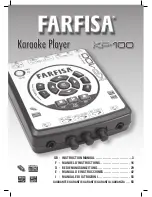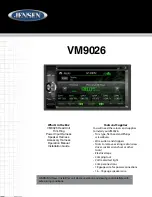
Installing the System
20
charging process also will require a low flow
diaphragm pump (Flojet or equal) to fill and
pressurize the collector loop.
Connect the discharge side of the pressure
pump to the upper isolation/drain valve
(No. 7) Place the pump suction side hose in
the glycol solution. Close the isolation ball
valve (No. 7) and connect a second hose
to the lower isolation/drain valve (No. 6).
Place the other end of the hose in the empty
bucket.
Open the upper drain valve and allow the
pressure from the expansion tank to push the
water in the glycol loop back to prime the
pressure pump. When the hose in the bucket
containing the glycol mixture stops bubbling
you may begin charging the collector loop
with glycol.
With both drain valves (No. 6 & 7) faucets
now open, run the pressure pump until the
pinkish glycol mixture begins flowing into
the empty bucket. Quickly switch the hose
from the empty/return bucket to the bucket
containing the glycol mixture. Continue to
circulate the fluid using the pressure pump
until the bubbling has stopped and the air
has been purged.
• After charging the collector loop, shut
the lower drain valve (No. 6) and let the
pressure pump drive up the loop pressure to
the appropriate level (Generally in the range
of 25 PSI). To more accurately calculate
the proper pressure measure the height of
the solar collector above the solar storage
tank and divide this number by 2.31. Then
add 20 PSI to this number. As a word of
caution, the pressure in the glycol loop
should not exceed 45 PSI when the system
is operational on a good sunny day. Contact
your solar contractor if the charged collector
loop pressure exceeds this threshold.
Your solar water heating system must be
charged and the fluid quality maintained by
an experienced contractor. If the system is
drained during the winter, or you notice a
significant drop in collector loop pressure,
contact your installation contractor
immediately for service. The glycol HTF
provides the freeze protection for your
system and must be properly maintained. An
experienced contractor should periodically
check the HTF fluid quality.
Dowfrost HD HTF
To ensure maximum effectiveness for corrosion
protection, the glycol inhibitor package
is designed for a minimum 25-30 percent
concentration of glycol in water. Table 4 shows
the concentrations of Dowfrost HD required to
provide freeze and burst protection at various
temperatures. Use the mixture most appropriate
for your climate. Do not use a higher glycol
to water concentration than necessary, as this
will adversely impact the relative heat transfer
efficiency of the solution.
Generally, for an extended margin of protection,
you should select a temperature that is at least
5°F lower than the expected lowest ambient
temperature. These figures are examples only
and should not be regarded as specifications. As
conditions are not within our control, we do not
guarantee that freeze damage may not occur at
temperatures other than shown.
Water used to dilute the HTF must meet certain
minimum standards for purity. Impurities in
the dilution water can increase metal corrosion,
reduce the effectiveness of corrosion inhibitors,
increase inhibitor depletion rate, and cause the
formation of scale and other deposits on the heat
exchanger's internal heat transfer surfaces.
Distilled or deionized water is required.
The HTF pH level must be maintained between
8 and 10 to minimize corrosion and glycol
oxidation in the piping system.













































